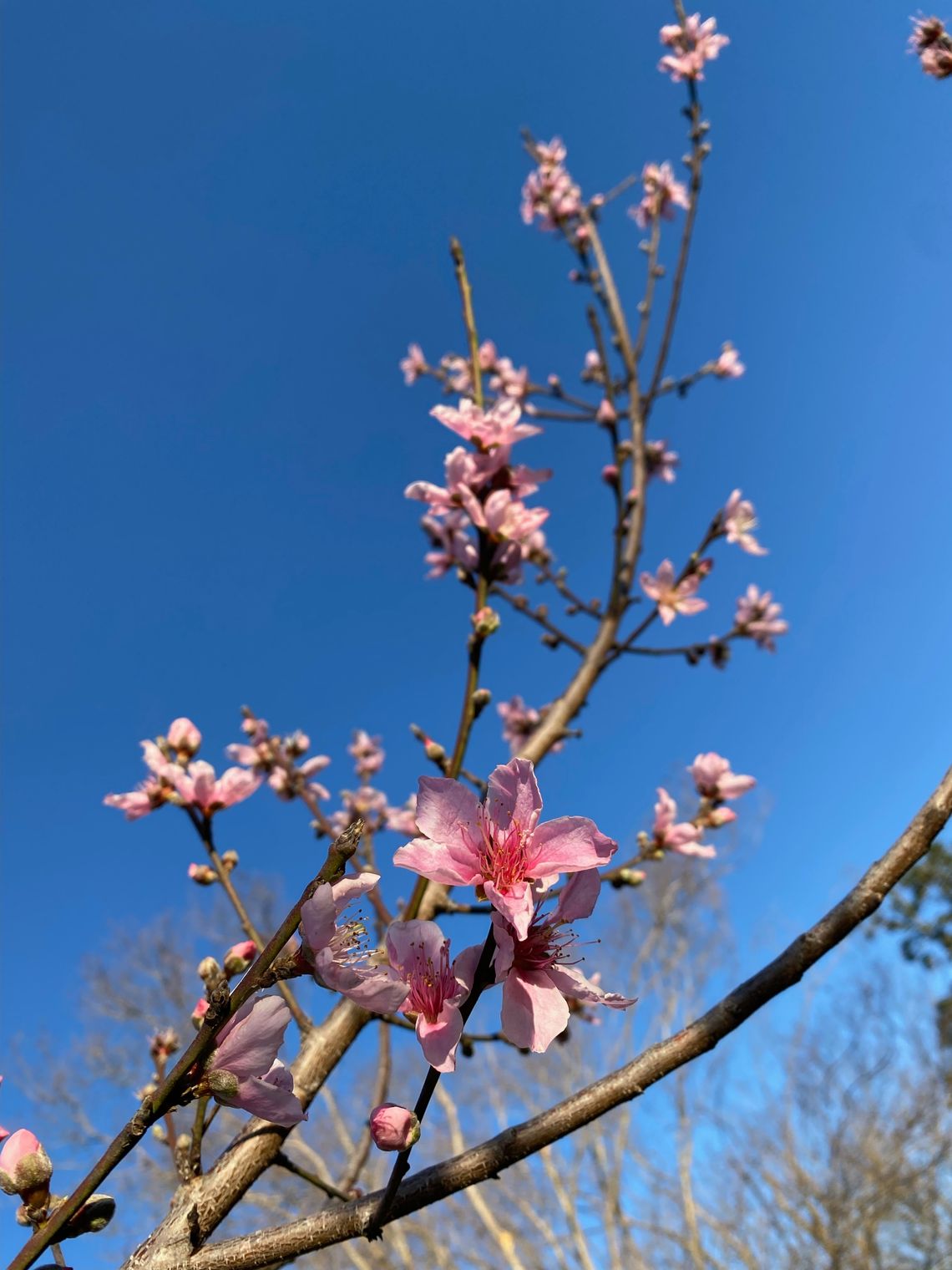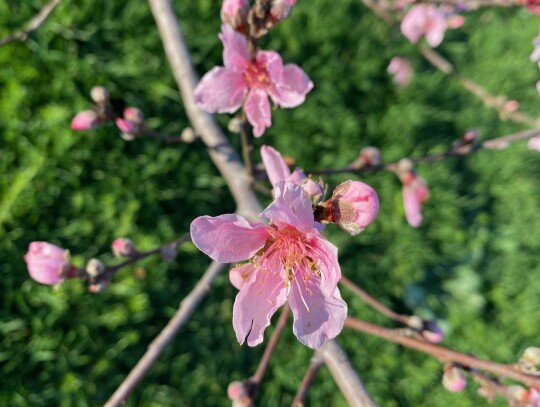Few things beat eating fresh fruit picked straight off the tree.
If you are interested in adding fruit to your landscape, don’t hesitate. Fruit trees are multipurpose. They add beauty with spring blossoms, shade through summer and fall, plus you get fruit. March is the perfect time to plant fruit bearing trees and plants.
When shopping for fruit trees, be sure to find out if the variety you want is self-pollinating or if you need a second tree to cross pollinate. Apples, pears and plums need a buddy tree. Peaches, apricots and nectarines are self-fertile and can produce fruit without cross pollination.
Also, check the tag for the chill hour number for the varieties you are considering. Chill hours refers to the number of hours that the temperatures are below 45 degrees. Fruit trees go dormant in the winter and need a certain amount of cold dormancy in order to grow, flower and develop fruit properly.
When fruit trees go dormant in the winter, hormones inside the plant dissipate. This suppresses budding until the temperatures rise. Chill hours are important to fruit trees. If a tree doesn’t get enough chill hours during the winter, the flower buds might not open in the spring and affect fruit production.
Different types of fruit trees have different chill hour requirements. Different varieties within the same species can have different chill hour requirements.
Chill hours for fruit trees are measured from November through February. Here in Taylor and our part of central Texas, we are in the 600-hour region and get anywhere from 450 to 750 hours per year that are under 45 degrees.
Other parts of the state get more chill hours, like the panhandle where they get more than a thousand chill hours per year. The southern tip of Texas where it’s warmer only averages 200 chill hours.
For our area, you want to find varieties that have chill hours that fall between 450 to 750 hours. Those will produce the best.
Trees with higher chill hours need more cold time during winter dormancy. They can grow and be beautiful trees, but chances are they won’t fruit and may struggle in other ways.
With protection from the prolonged cold, it is possible to grow those subtropical fruits like pineapple guava, citrus, fig, olive, persimmon, pomegranate or loquat. These require fewer chill hours to be fruitful in central Texas.
It is easy to protect and provide warmth for established plants but incredibly impractically to attempt increasing chill hours.
With 25 years of backyard gardening experience, Julie is a plant and nature enthusiast. She lives in Taylor and hosts the “Plow & Hose Organic Gardening in Central Texas” podcast and radio show that airs on KBSR, Black Sparrow Radio every Saturday and Sunday at 9 a.m.
.png)







